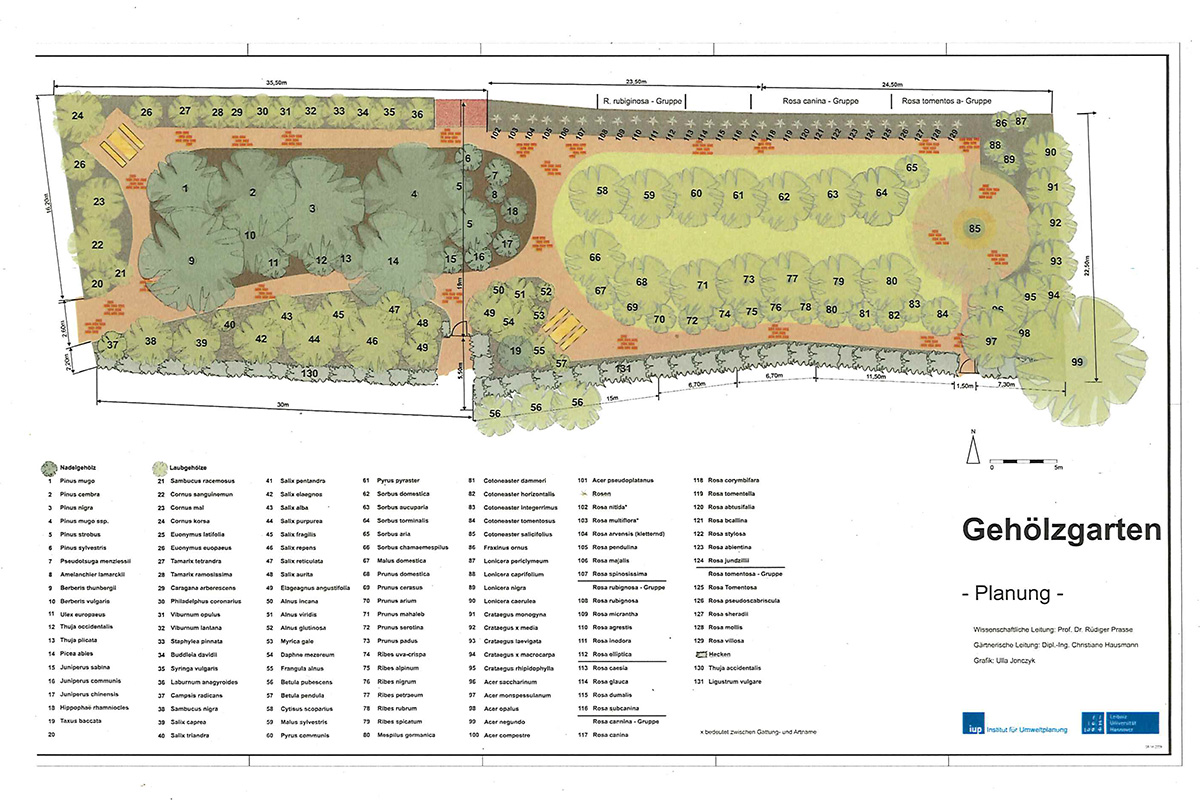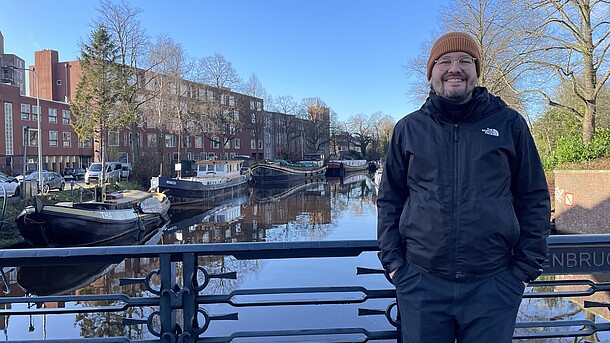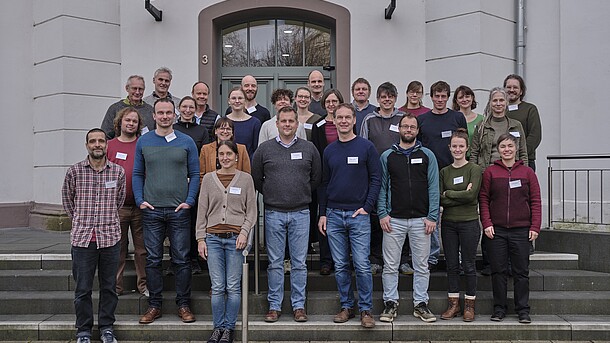
Since 2009, the wooded garden of the Institute of Environmental Planning has been located on the university grounds at Herrenhäuser Str. 2, on the corner of Burgweg and Haltenhoffstraße. It is located on the former open spaces of the "Villa Maatsch", which was listed under monument protection in 1997. Almost all native woody plants - apart from extensive groups of species such as blackberries - as well as selected ornamental woody plants that are significant for landscape architecture will soon be growing in the woody garden.
Students of landscape architecture and environmental planning will thus have the opportunity to acquire knowledge of species directly on the university campus and to study the change of woody species over the course of the year.
In spring 2009, with the help of student assistants, the existing overgrowth on the long-neglected site was cleared. In late summer, a new path system was laid out in a first construction phase and the planting of trees and shrubs began. The material came in part from the collection of native wild roses of the Nursery Department in the Institute of Ornamental Plant and Woody Plant Sciences (Institut für Zierpflanzen- und Gehölzwissenschaften) and from the stock of the Department of Molecular Plant Breeding in the Institute of Plant Genetics at Leibniz University ( Abteilung Molekulare Pflanzenzüchtung im Institut für Pflanzengenetik). Further material, mainly from the Rosaceae family, was supplied by the municipal tree nursery in Hanover.
In spring 2010, the path system was completed in the second section; Urs G. Jäger from Halle provided the willow cuttings for the planting, and several hybrids of the genus Salix were added in summer 2011.
Since 2014, the collection of rose species (Rosa div. spec.) growing in the wild in Germany has been expanded and a collection of endemic species of mealberry (Sorbus div. spec.) has been established. Botanical gardens and scientific institutions have a special responsibility for the conservation of the common mealberry species, some of which have extremely small natural ranges.
In the autumn of 2021, work began on the third and final, westernmost part of the grove garden. Together with Christiane Hausmann, the students cleared the wilderness that had been created here in September.
The work continued as part of a one-day impromptu 'Setting up and measuring a small gardening and landscaping site'.
In December, a week-long impromptu on 'Path and site construction' took place, with 32 students working in small groups of four or five over seven days in the grove garden. Hofmann und Lehye provided the equipment and two skilled workers. Clinker paving and water-bound paths were laid. The students kept a construction diary for each day and had to submit an individual tender for a specification as a theoretical task.
The trees and shrubs will be planted in the autumn of 2022 to complete the woodland garden.















































